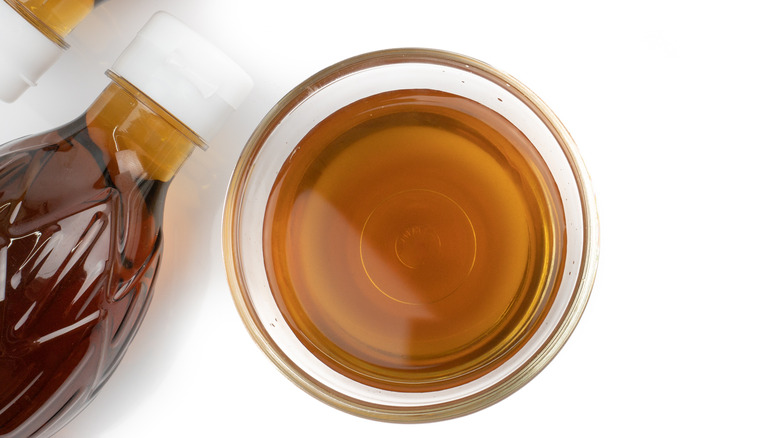Give Your Bolognese An Umami Kick With A Dash Of Fish Sauce
Pasta Bolognese is a dish rich in both flavor and dispute. On one hand it's an Italian-American classic, often appearing on menus sandwiched somewhere between the penne alla vodka and fettuccini Alfredo. On the flip side, pasta Bolognese is as rustic as they come, originating in Bologna, Italy around tail end of the 19th century. The original recipe, published in 1891 in the Pellegrino Artusi cookbook, was made with lean veil, pancetta, butter, onion, and carrots (and maybe a half cup of cream depending on the cook's discretion). But do you know what's noticeably absent from this recipe? Tomatoes!
But that's the beauty of culinary traditions. As time moves forward, they continue to change and evolve based on the people who have adopted them. That's why when you cook your next batch of Bolognese, you shouldn't be afraid to experiment with flavors and ingredients that seem a little out of the box. And one of those ingredients should be fish sauce.
Fish sauce? In meat sauce? Yup, this salty fermented condiment ubiquitous in Southeast Asian cuisine adds a satisfying umami flavor to your Bolognese without any sort of fishy aftertaste. It'll round out the flavors and have your guests wondering whose nonna gave you the recipe.
Fish sauce brings balance to a classic meat-forward Bolognese
A classic Bolognese is a smooth, slow-cooked meat stew that arguably shares more similarities with a crock of Texas chili than an authentic Italian marinara sauce. Therefore, when planning out your Bolognese, you really want to focus your attention on your protein selection. Although originally made with veal, modern recipes use everything from beef to pork, lamb to wild boar. Some even use offal, like chicken liver, to up the decadence and gaminess of the finished sauce. But what all these proteins lack is a dose of umami, the exciting fifth taste that contributes subtle depth and complexity to all sorts of dishes.
That's where fish sauce comes in handy. While tomatoes, browned-meats, and aged cheeses are all good sources of umami, they can't compare to the power and potency of fish sauce. It contributes a savory, organic, earthy flavor that complements the other elements — wine, tomatoes, pancetta, mirepoix, and dairy — common to many typical Bolognese recipes. But like a habanero pepper or your most recent high school reunion, a little bit goes a long way. Add your fish sauce at the very end of the cooking process, and use it sparingly — no more than 1 or 2 tablespoons for 8 to 10 cups of Bolognese. But it's probably safer to start with less and dribble in gradually (maybe even separate some sauce out, add a dash, and give it a try).
Other innovative ways to incorporate fish sauce into your cooking
Once you start experimenting with fish sauce, you'll begin to recognize the power and breadth this ingredient can add to your cooking. And while it is most common in Southeast Asian cuisine, its potential certainly isn't limited by geography. A great place to start using fish sauce is in a marinade for chicken or steak. Whisk it together with soy sauce, rice vinegar, fresh ginger, and sesame oil for a big blast of umami. It's also great in dumpling sauce or other dips, like guacamole or pico de gallo.
But that's really just the tip of the iceberg. Fish sauce can be added to hamburgers, a homemade Caesar dressing, and even boxed macaroni and cheese benefits from fish sauce! If you're a fan of pickling at home, try adding a few dashes of fish sauce to your next jar. It's also pretty good in a savory cocktail — fish sauce Bloody Mary's anyone? But this funky ingredient shines brightest (and boldest) in desserts. Salty-sweet caramels, cookies, and ice cream can all stand to benefit from a dash or two of its salty goodness. And while this isn't the article to dive into the best brand of fish sauce, any variety you choose will add another dimension to your next batch of Bolognese.


